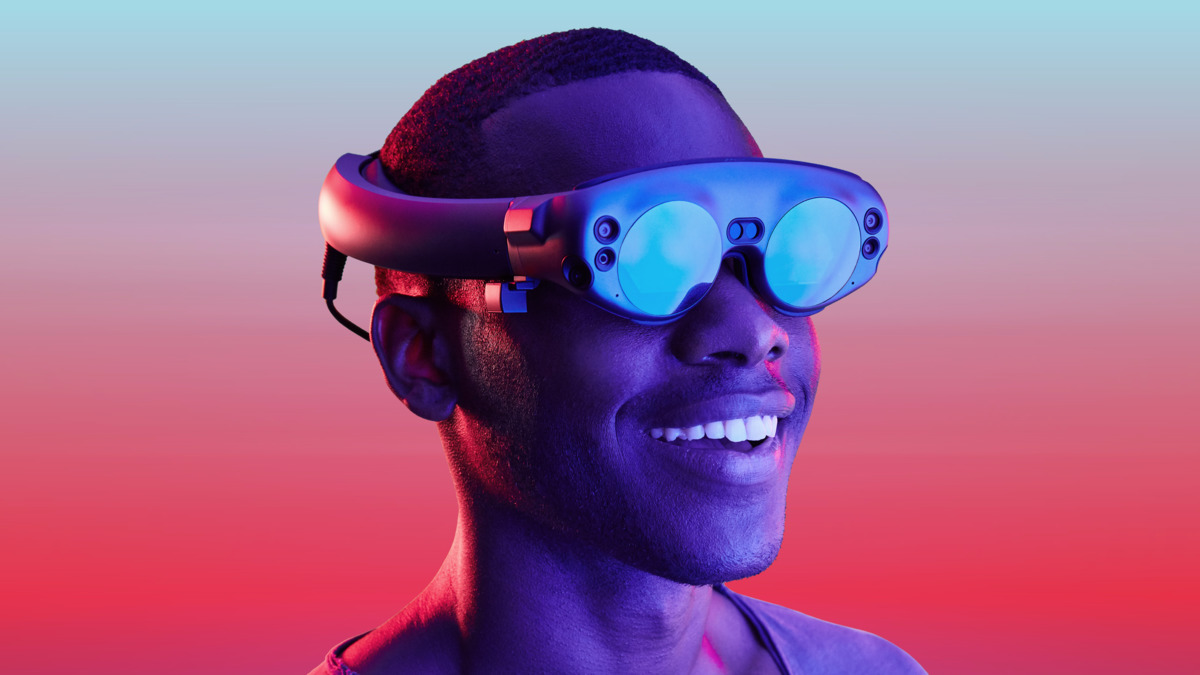Although the Magic Leap One is the name of the AR headset that is one of the world’s most prized possessions, it has another meaning behind the name as well.
Magic Leap was first founded in 2010 by Rony Abovitz. In October of 2014, the company had already earned over $540 million from investors such as Google, Qualcomm, Andreessen Horowitz, Kleiner Perkins, and many others. Although the company had all of the investors and backers needed for a big splash in AR, they were still operating under the radar.
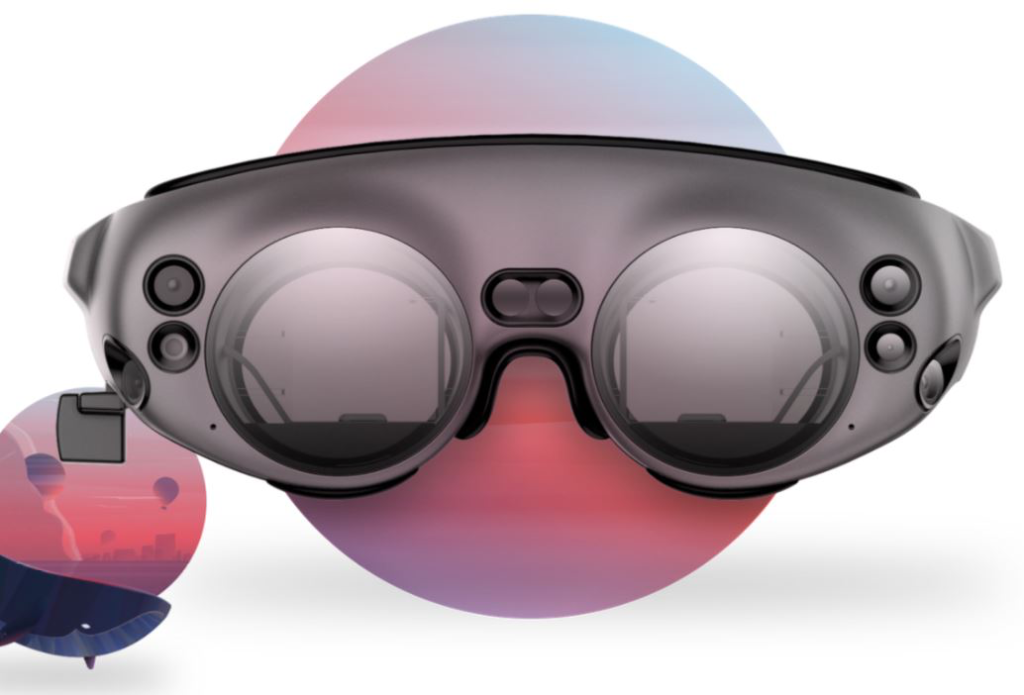
The Magic Leap One is not what the company originally set out to do. They first started with a simple AR app named comic-con back in 2011, but it wasn’t until 2014 when the company finally released that it had plans to make a juiced-up version of the Google Glass. Many early users and viewers of the product compared it to the early versions of the Microsoft Hololens. It wasn’t until 2015 when the company gave a taste of what they have been working on to the public. They released a video named “Just another day in the office at Magic Leap” for the launch, but it was still unsure if the virtual objects and images used in that commercial were the actual work that Magic Leap One has used, or if those images were computer generated or generated in a VR headset.
Later that year, they released actual software footage without releasing any images or video of the hardware. It was said that the footage was recording from inside of the Magic Leap and there was no computing interference with he images and videos being shown. The video showed groundbreaking technology. The software could 3D map the area, and make virtual object work perfectly with the real world in seamless fashion.
Fast forward to today, and the Magic Leap is one of the best, if not the best, augmented reality headsets on the market.
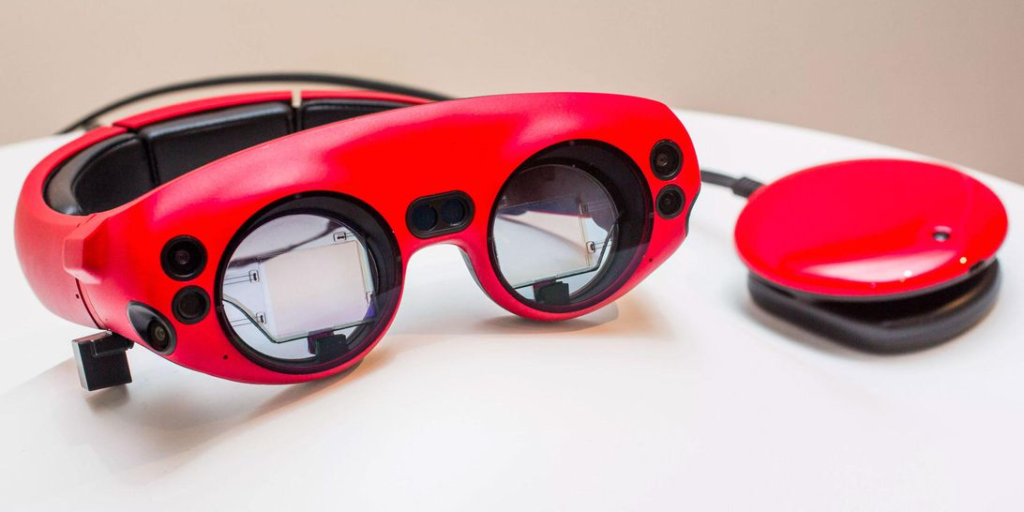
The Magic Leap One is a futuristic pair of wearable eye glasses that incorporate augmented reality (AR) with the real world around you, yet the glasses don’t take away the ability to interact with the real world around you without having to remove the eye wear.
According to Magic Leap, the glasses are not only the future of augmented reality, but the future of wearables, any smartphone, and computing.
It may sound too much like science fiction, or something only available to Tony Stark. Fear not, this has been designed for the average user, but it has a pretty asking price. The headset it aimed for more of developers and corporations than it is for high-end consumers. Although the headset is aimed for those people, recent partnerships with companies like AT&T, Google, CNN, and Directv Now have bolstered the value of this AR headset to the average consumer, this is like a business headset in the VR industry,

Because of Magic Leap now being partnered with AT&T, the headset is slowly rolling out to their stores across the United States. Finding the glasses in person might be a pain for now, the company has promised that there will be plenty of locations and platforms where you can buy their product by the end of the year. You can buy the headset right now for just under $2,300. The hardware is definitely there, but the software still has a little ways to go before you know that every dollar you spend will be worth the price. With that being said, lets look at this device
Design
It is no secret that most AR and VR headsets are not the most aesthetic pieces of equipment in the world. There have been some odd-looking headsets, and even some great looking headsets. Magic Leap has taken every step possible to ensure that their headset isn’t on the outside looking in when people look at the stylish of these products.
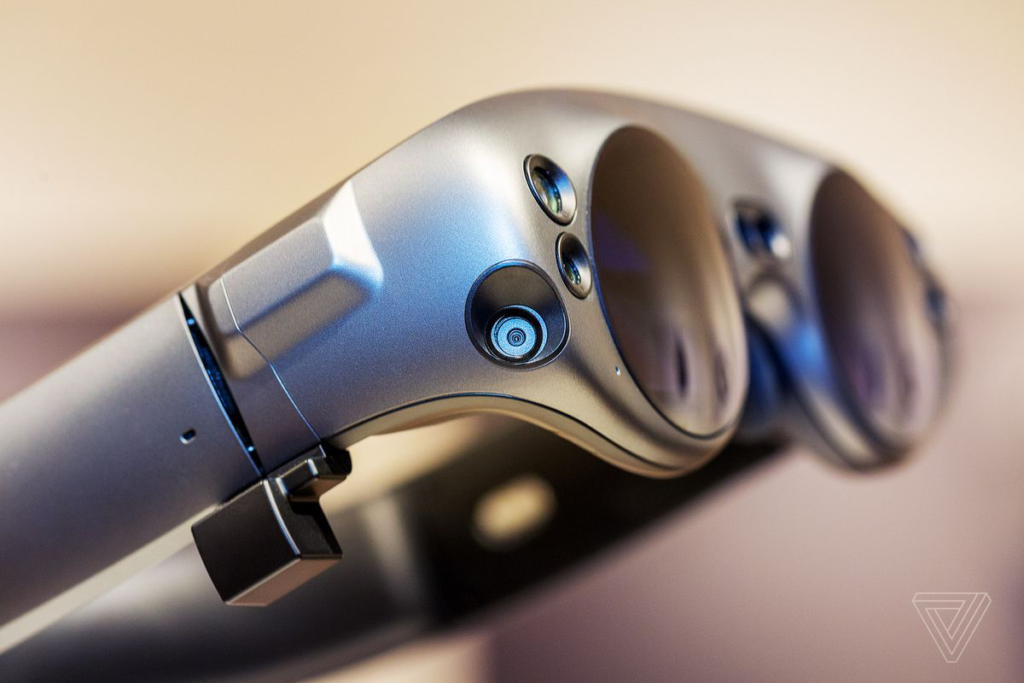
The Magic Leap One is a headset that has found their happy medium. It doesn’t look too much like a piece of eyewear that keeps you from interacting, but the band around the head is enough to know that their eyewear is packing a punch when it comes to their technology.
The headset holds in place against the temples of your head and the back of the head, without any straps up against the top. This may lead you to think that the headset would put a great amount of stress on your temples, but Magic Leap has done a great job distributing the weight evenly, so when you have this headset on a while, you will barely feel it.
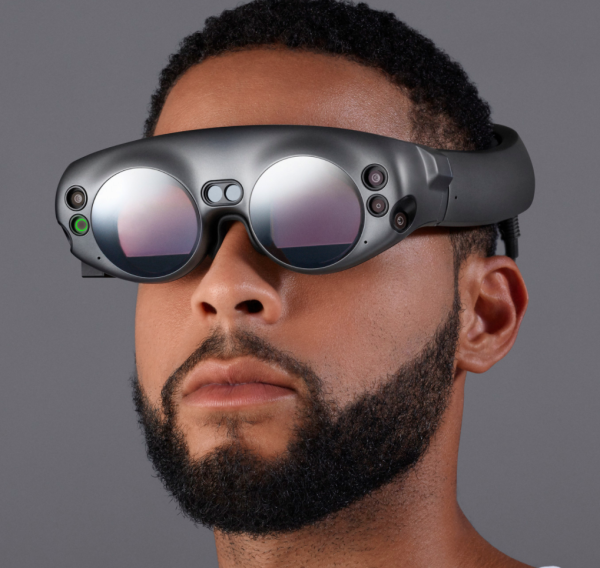
The Magic Leap One comes in two different sizes, and each can be adjusted to fit perfectly around your head. The corners of your vision will slightly be cut off, but the trade off is the amazing field of view. Something that Microsoft has yet to really figure out with the Hololens just yet. This doesn’t offer the great 110 degrees like a virtual reality headset, but it definitely gets the job done.
The controller has nearly no difference between any other VR or AR controller. It is shaped like an oversized thumb that has a touch pad, and can act like a cursor when being swung around. There are two buttons on either side that will be changing throughout your experience, depending on what app and function you are running. We are told that Magic Leap is looking to add support for a second controller that will be for running complex games and apps.
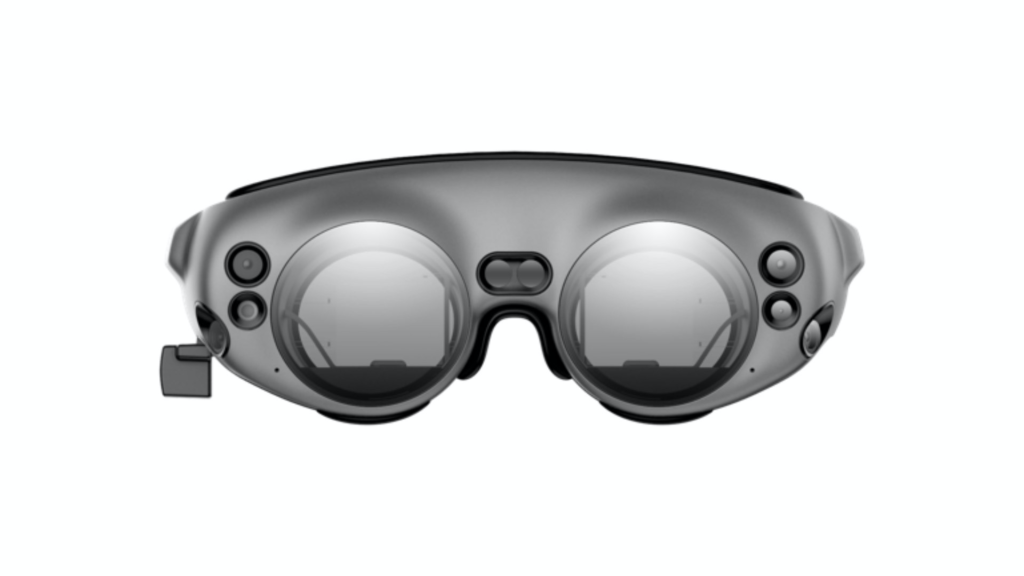
You are essentially not connected to any external PC, but you will have a wire that runs from your headset to a disc shaped piece of hardware that is connected to your belt loop or pocket, using the internal sensors. The look of this is a bit different, especially because that it will be hanging on the outside of your pocket as to not overheat. The wire is long enough that no matter your height, you won’t be worrying about getting pulled in any direction. You will most likely forget it is there within just a few minutes of putting the head piece on.
Overall, the design of this product is amazing. It is sleek and slim, but has enough room to comfortably fit the technology that keeps the headset going.
Performance
Although this headset is far more advanced than any piece of eye wear you will wear in the foreseeable future, Magic Leap One has done a great job of making the Magic Leap One pretty simply and natural to use. It is easy to understand the gestures that are needed to run this unbelievably believable
Rather than hiding your eyes behind a visor, Magic Leap One puts the glasses on you so the ‘digital light’ shines and looks like the objects are projected onto the real world. Because this route was taken, it leaves plenty of space and light to be seen of the real world as well. This is exactly what the term mixed reality is and means.
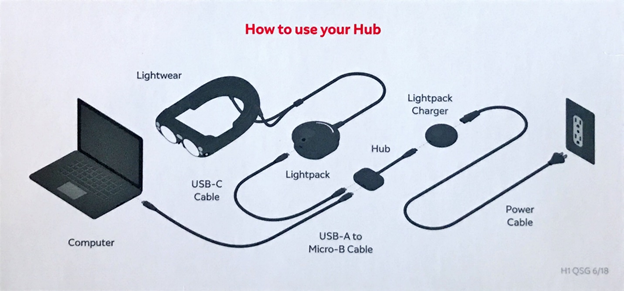
The creative director for Extended Reality, Sami Ronkainen, commented on this technology and how it is an added bonus saying “in VR systems, you always have displays right in front of your eyes. But with these light displays, you can focus on different distances, which reduces strain on your eyes, and is more like looking at objects in the real world.”
Having the ability to interact with real world while still using the computing platform with a computer or web browser is still finding its way in this world. In virtual reality, you have complete immersion and isolation from anything in the outside world, but in augmented reality, you can still be with the people in the room, while operating in a mixed reality through mixed reality glasses. This is a much more attractive way to work going into the future. Virtual reality should eventually have a monopoly on gaming, but the way we work and interact with others should belong to augmented reality.
That is not to say AR will not and does not have a future in gaming. There will be certain titles that are simply better in the real world using augmented reality. We can take Angry Birds as an example. Although this game was originally made for the phone, this game is much more entertaining while having the glasses on. Watching the towers fall in real time onto your kitchen floor is better than any VR installment of this game. The haptic feedback in this game is was impressive as well in these reality glasses.
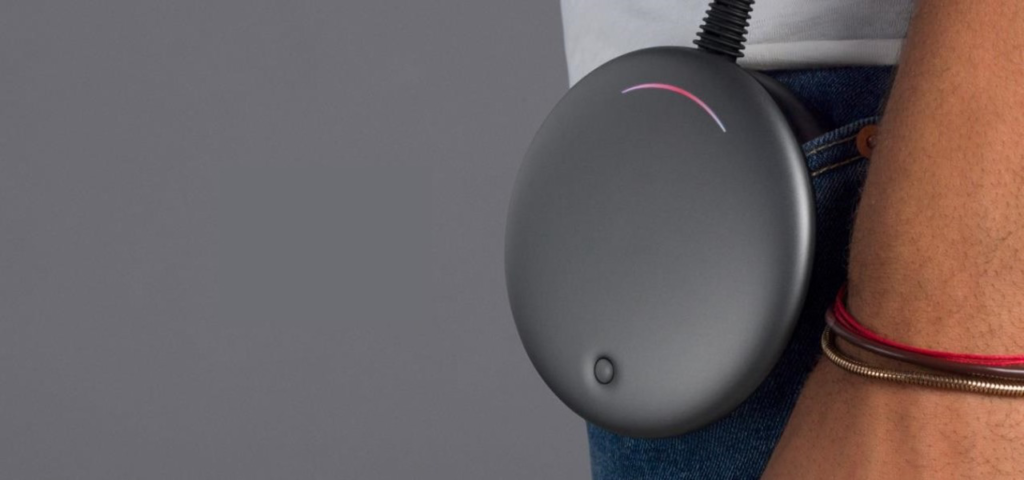
Now of course you won’t be spending over $2,000 on a pair of glasses to simply play Angry Birds, although it is a fun startup game for AR. There has to be a great return to buy something of that price for your work. This is where the new partnerships with Magic Leap and new developers come in. The companies new partnerships are mostly with entertainment companies which might be a sign of what is to come.
Is the Magic Leap leaning towards reducing their prices and making this a common consumer friendly headset? Probably not, but it is something to keep an eye on. And with the Creator Edition doing so well we could see new and different versions of this piece of eye where come in the new future, especially with new degrees of freedom for the tracking of this Leap device.
Can I Wear Glasses With The Goggles?
No. You cannot wear your regular prescription eye glasses while wearing the Magic Leap One. Although that doesn’t really come as a surprise, Magic Leap has done a great job with finding a solution for the many that need prescriptions to see clearly. Now with the latest edition of the Magic Leap One, you can insert prescription eye glass into the headset, making it a seamless and easy process.
What To Do On The Magic Leap One?
The next logical question people will ask is what the Magic Leap can do, right? That question essentially has endless answers because of the potential of the software and hardware, and what a developer can do with it, so for now we will focus on what the Leap can do in this current time frame, and what you can teach the leap to do in your physical space.
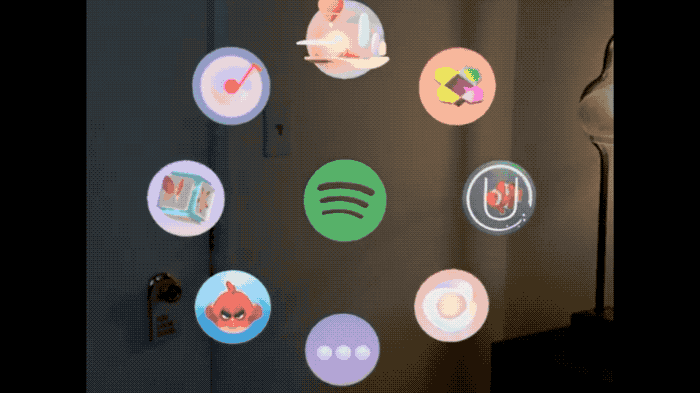
The main ingredient in this headset is the computer. Magic Leap made a whole new computing system for this headset, the Lumin Operating System. This is design to work with the spatial computing systems and digital light fields to deliver the best experience through your eyes and to your brain. This system is fully optimized for a full environment recognition, and a power to consistently be running a high-fidelity visual experience that will fulfill every mixed reality imagination you can create.
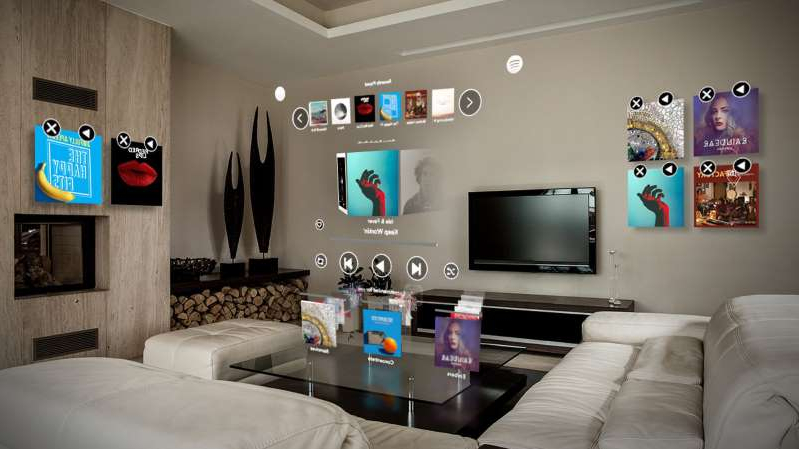
Lumin OS also includes many social sharing experience through the headset. Avatar Chat will be the new way communicate through technology it seems. The ability to make you feel connected and there are second to none, and soon enough it will be more than mainstream. This also creates an opportunity to stream content in real time as well.
Entertainment will never be the same once you experience it in the Magic Leap One. Screens will literally be jumping off of your wall. Not only will movies and TV be improved, but sports will be taken to a whole new level. With the recent parternship of the NBA, new basketball related content will be not only flowing onto your device, but to your kitchen counter, living room walls, and anywhere else you take your goggles.

The gallery feature when running Lumin OS is another great feature that this company has included for those that use their headset. In this app, you will be able to showcase, organize, and share your best photos, videos, and even the models you have made while using the the Magic Leap One. Not only can you share it, but you can connect it to your social media accounts that you have.
The possibilities of this device are nearly endless. Since the company has partnered with AT&T, they have grown in numerous ways.
Specs
CPU – NVIDIA® Parker SOC; 2 Denver 2.0 64-bit cores + 4 ARM Cortex A57 64-bit cores (2 A57’s and 1 Denver accessible to applications)
GPU – NVIDIA Pascal™, 256 CUDA cores; Graphic APIs: OpenGL 4.5, Vulkan, OpenGL ES 3.3+
RAM – 8 GB
Storage Capacity – 128 GB (95 GB of actual usable storage)
Power – Built-in rechargeable lithium-ion battery. Up to 3 hours continuous use. Battery life can vary based on use cases. Power level will be sustained when connected to an AC outlet. 45-watt USB-C Power Delivery (PD) charger
Connectivity – Bluetooth 4.2, WiFi 802.11ac/b/g/n, USB-C
Audio Input – Voice (speech to text) + real world audio (ambient)
Audio Output – Onboard speakers and 3.5mm jack with audio spatialization processing
Controller
Haptics – LRA Haptic Device
Tracking – 6DoF (position and orientation)
Trackpad – Touch sensitive
LEDs – 12- LED (RGB) ring with diffuser
Power – Built-in rechargeable lithium-ion battery. Up to 7.5 hours continuous use. 15-watt USB-C charger
Other Inputs – 8-bit resolution Trigger Button; Digital Bumper Button; Digital Home Button






















